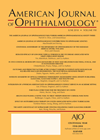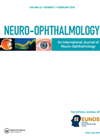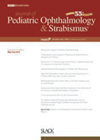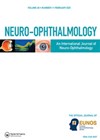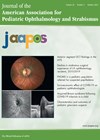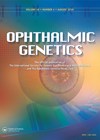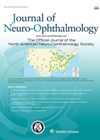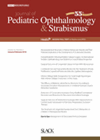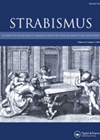You searched for "clinic"
Sarcoid uveitis and its systemic associations
1 October 2021
| Tasmin Berman
|
EYE - Vitreo-Retinal
This retrospective cross-sectional study examined systemic associations of sarcoid uveitis and association with uveitis clinical phenotype and ethnicity. Three hundred and sixty-two subjects with either definite or presumed sarcoid uveitis were identified and included in the study. Any subject with...
Retrospective review of visual outcomes in Idiopathic intracranial hypertension (IIH)
1 December 2022
| Claire Howard
|
EYE - Neuro-ophthalmology
|
Idiopathic intracranial hypertension, Pseudotumor cerebri, visual outcome
Idiopathic intracranial hypertension (IIH) is a clinical syndrome characterised by headache and papilloedema that can lead to significant visual morbidity. IIH is diagnosed by the modified Dandy criteria, which include normal neuroimaging and cerebrospinal fluid (CSF) composition, high CSF opening...
Assaying acetylcholine receptor antibodies in the diagnosis of ocular myasthenia
1 December 2022
| Claire Howard
|
EYE - Neuro-ophthalmology
|
Ocular myasthenia, anti-acetyl choline receptor antibody, generalised myasthenia
Myasthenia gravis (MG) is an autoimmune disease that leads to impaired neuromuscular transmission. Solely ocular manifestations of MG (OMG) occur in 15-50% of cases, most frequently in the form of fluctuating ptosis and diplopia. Most cases of OMG convert later...
Leber’s hereditary optic neuropathy outcomes in an Indian population
A large cohort study in an Indian population is presented, with clinical and genetic profile analysis of patients with Leber’s hereditary optic neuropathy (LHON) treated over a five-year period. The study included 157 patients; 143 male, 14 female (10.2:1 ratio)...Amyotrophic lateral sclerosis (ALS): what happens to eye movements?
3 February 2023
| Claire Howard
|
EYE - Neuro-ophthalmology
|
Eye movement, amyotrophic lateral sclerosis, anti-saccades; biomarker, pursuit, saccades
Amyotrophic lateral sclerosis (ALS) is a neurodegenerative disorder of upper motor neurons of the corticospinal tract and lower motor neurons in brainstem nuclei and the anterior horn of the spinal cord. Limited literature is available on abnormal ocular movements in...
Risk factors identified for glaucoma progression in paediatric glaucoma suspects
A retrospective case review was conducted of children (<18 years) identified as being glaucoma suspects using common clinical criteria or the Childhood Glaucoma Research Network definition. Exclusion criteria included penetrating ocular trauma, treated ocular hypertension / glaucoma and use of...Patient reported outcomes in adolescents with inherited retinal diseases
4 October 2023
| Ian Reekie
|
EYE - Vitreo-Retinal
|
PROM, Patient-reported outcomes, clinical trial, gene therapy, inherited retinal disease, pediatrics, retinal dystrophy
This was a two-centre validation study of two sets of patient reported outcome measures (PROMS) for adolescents (13-17- years-old) with inherited retinal diseases. The measures were the Michigan Retinal Degeneration Questionnaire (MRDQ) and the Michigan Vision-Related Anxiety Questionnaire (MVAQ). Both...
Driving with retinitis pigmentosa
4 December 2023
| Ian Reekie
|
EYE - Vitreo-Retinal
|
Inherited retinal disease, driving standards, retinal dystrophy, retinal imaging, retinitis pigmentosa, visual field testing
The authors present a study of 228 consecutive patients with a clinical or genetic diagnosis of retinitis pigmentosa. Data was collected prospectively between January 2012 and October 2022 in Perth, Australia. The study aimed to determine the proportion of patients...
PRPF31-related retinitis pigmentosa and asymptomatic carriers
1 March 2024
| Ian Reekie
|
EYE - Vitreo-Retinal
|
FST, PRPF31, RP11, Retinitis pigmentosa, asymptomatic carriers, non-penetrance
The authors present a study of 21 patients with variants in the PRPF31 gene classified as pathogenic or likely pathogenic. These variants are caused by autosomal dominant retinitis pigmentosa (RP-11). Between January 2020 and November 2021 patients underwent tests of...
Pilot trial of Fluoxetine for post-stroke homonymous hemianopia
3 April 2024
| Lauren R Hepworth
|
EYE - Neuro-ophthalmology
The authors present a pilot randomised placebo controlled double blind trial assessing 20mg fluoxetine once daily for 90 days versus placebo in stroke survivors with isolated homonymous hemianopia. Exclusion criteria were extensive in terms of pre-existing ophthalmic or neurologic disease,...

